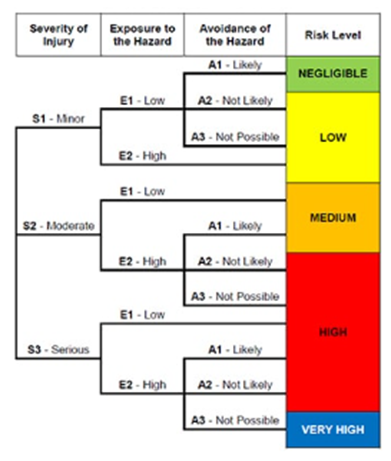ABOUT

KNOWLEDGE HUB
Knowledge you can use from experts you can trust
Blog > Modern Machine Safety Concepts: What You Need to Know to Tackle a Project

Modern Machine Safety Concepts: What You Need to Know to Tackle a Project
6/5/24 | Tom Hopkins, Senior Industrial Automation Solutions Specialist
There are two important things to note about modern machine safety:
- Keeping personnel safe, of course
- With a properly designed safety system, machine uptime is increased
I like to joke that in the past machine safety meant stop, but in today’s world it means GO.
Functional Safety
The term for this concept is “functional safety.” To put it simply, when a system is properly designed it will protect personnel and stop production less often.
You could fence off a piece of equipment so access is always denied, and no one could possibly get hurt. But how functional is that? Operators need to feed in raw materials and take out finished parts, jams need to be cleared – people need to access the equipment. This is where functional safety comes in.
A functional safety system uses input devices which allow safe access while the machine is running. Safe access that doesn’t require a lockout that would cause longer periods of production stoppage. The devices used in a functional safety system are items such as light curtains, pressure mats, door interlocks, safety relays, motor drives with ‘safe torque off’ functionality, etc.
Of course there are times a lockout is required. However, when a function is considered “routine, repetitive, and integral to the use of the equipment,” OSHA gives you options to not lockout. It’s called the “minor servicing exception.”
Part of your options are functional safety machine controls.
Where to Start? A Risk Assessment is a MUST
How do you know where to go if you don’t know where you are? The foundation for setting up a proper safety system is performing a risk assessment. This is an absolute must! Too often I see guards just placed in a location without thinking about the whole machine system. An assessment is essential for quantifying what level of risk exists and making a plan to mitigate it. Here’s a high-level look:
- Identify ALL the hazards on a piece of equipment
- Quantify the level of risk at each one, as if it had no protection around it
- Section TR 15.06.306, “Task-Based Risk Assessment Methodology,” of the American National Standards Institute’s (ANSI) RIA R15.06 standard is a good choice to follow for quantifying risk
- Make a plan to mitigate the risks

The above chart from the TR15.06.306 standard shows how risk is quantified. The three factors in the table are clearly defined within the standard.
How to Mitigate the Risks?

This chart, from ANSI RIA TR15.06.306 does a good job of highlighting some methods of risk reduction measures and correlating them to a scale of effectiveness.
The ANSI B11 standard, “Performance Criteria for Safeguarding,” is also an excellent standard, talking about specific types of hazards and best practices around them.
Safety Controls
The results of your risk assessment will determine the level of “performance” that your safety controls require. The standard covering this is ISO13849 – “safety related parts of the control system.” I covered this comprehensively in a previous bog post.
Assemble a Safety Team
This process should always be done as a team. It is important to look at the risk assessment and mitigation process from a “task/hazard” perspective. That is, consider anyone that interacts with the machine at any time. Everyone thinks about protecting the operators, of course, but you must also consider who else interacts with the machine. For example, if there is a breakdown the maintenance crew will be involved and often need the machine powered up to troubleshoot. What does that task look like?
Others to include in your team: engineering, EH+S department, cleaning crew, operators, etc. Of course you want to involve the operators in the process, as they often know the machine better than anyone. I’m often surprised when management wants to exclude the operations department, thinking they can just tell them the solution once “the professionals” have made changes.
Let us Help You
If you want guidance for your first project, Rockwell Automation has a group that performs this type of work exclusively. As part of the assessment, they can include your team. In that way once machine A is handled, you and your team are ready to handle machine B on your own. Contact us today to get started.
Tom has worked in the world of automation for 20+ years and is certified by TUV Rheinland as a functional safety technician (#319/15).

Rexel Automation Solutions specializes in industrial automation services, solutions, and products that transform your application and operational needs into fully realized solutions, delivering measurable results and profitability for your company.